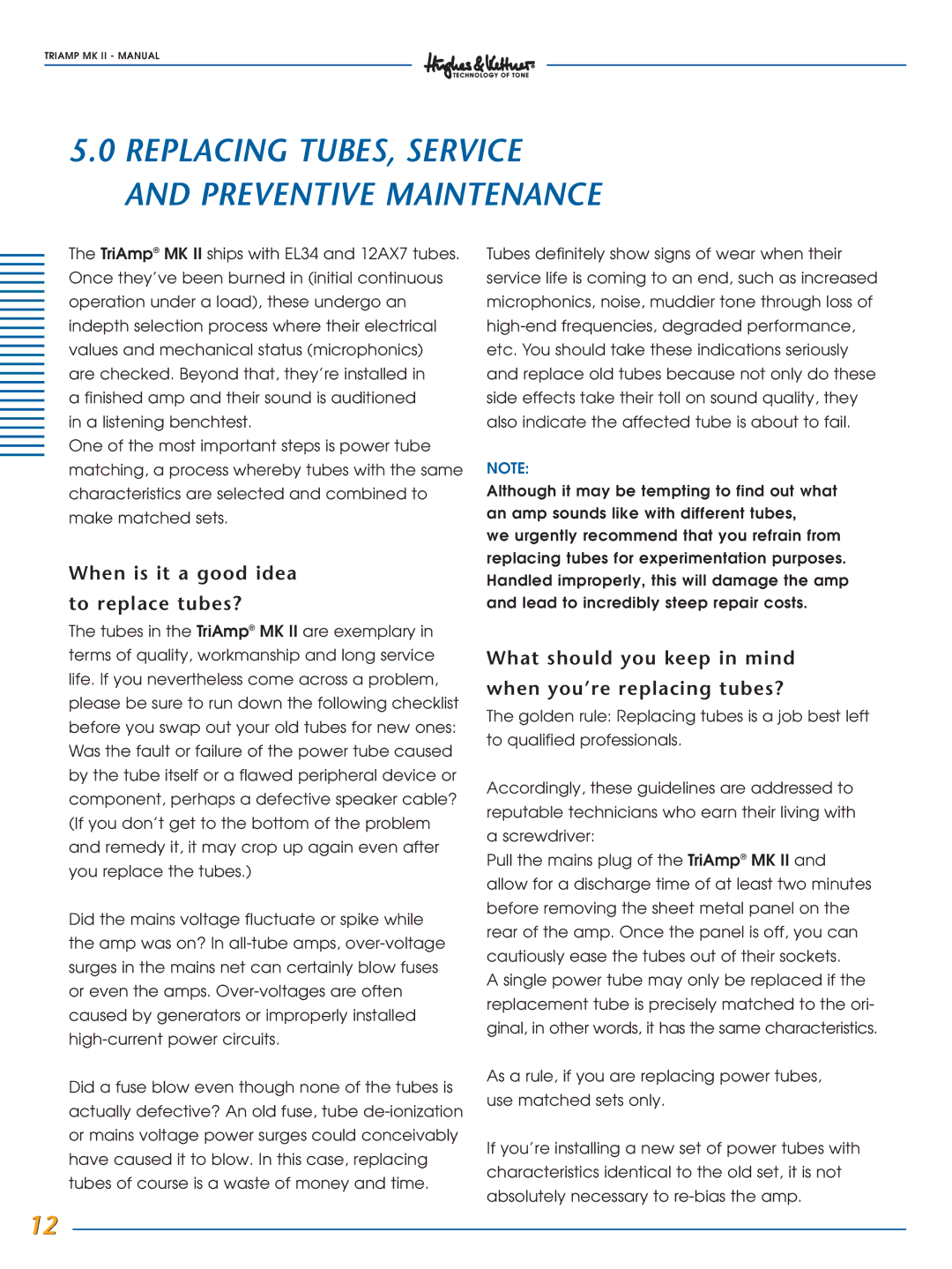
TRIAMP MK II - MANUAL
5.0REPLACING TUBES, SERVICE AND PREVENTIVE MAINTENANCE
The TriAmp® MK II ships with EL34 and 12AX7 tubes. Once they’ve been burned in (initial continuous operation under a load), these undergo an indepth selection process where their electrical values and mechanical status (microphonics) are checked. Beyond that, they’re installed in
a finished amp and their sound is auditioned in a listening benchtest.
One of the most important steps is power tube matching, a process whereby tubes with the same characteristics are selected and combined to make matched sets.
When is it a good idea
to replace tubes?
The tubes in the TriAmp® MK II are exemplary in terms of quality, workmanship and long service life. If you nevertheless come across a problem, please be sure to run down the following checklist before you swap out your old tubes for new ones: Was the fault or failure of the power tube caused by the tube itself or a flawed peripheral device or component, perhaps a defective speaker cable? (If you don’t get to the bottom of the problem and remedy it, it may crop up again even after you replace the tubes.)
Did the mains voltage fluctuate or spike while the amp was on? In
Did a fuse blow even though none of the tubes is actually defective? An old fuse, tube
Tubes definitely show signs of wear when their service life is coming to an end, such as increased microphonics, noise, muddier tone through loss of
NOTE:
Although it may be tempting to find out what an amp sounds like with different tubes,
we urgently recommend that you refrain from replacing tubes for experimentation purposes. Handled improperly, this will damage the amp and lead to incredibly steep repair costs.
What should you keep in mind
when you’re replacing tubes?
The golden rule: Replacing tubes is a job best left to qualified professionals.
Accordingly, these guidelines are addressed to reputable technicians who earn their living with a screwdriver:
Pull the mains plug of the TriAmp® MK II and allow for a discharge time of at least two minutes before removing the sheet metal panel on the rear of the amp. Once the panel is off, you can cautiously ease the tubes out of their sockets.
A single power tube may only be replaced if the replacement tube is precisely matched to the ori- ginal, in other words, it has the same characteristics.
As a rule, if you are replacing power tubes, use matched sets only.
If you’re installing a new set of power tubes with characteristics identical to the old set, it is not absolutely necessary to
12
